
The Bamboo Forest of Arashiyama
Narisa ChaiyasootThe Japanese have a long history with bamboo in their folklore, metaphorically linking a man's strength with this plant.

The Arashiyama Bamboo Forest is one of the most popular attractions in Kyoto and is made up of numerous trails for visitors to enjoy. For the best photos, make sure to get here early in the morning as it gets crowded very quickly.
It's not just the beauty of the bamboo that attracts people. The Arashiyama bamboo forest is one of the 100 most beautiful soundscapes in Japan, which are designated by the Japanese Ministry of the Environment. The sound of the rustling bamboo swaying in the wind is almost meditative.
If you walk along the main street of Arashiyama, you will also pass Tenryuji Temple, one of the most beautiful Zen temples in Kyoto. According to Japanese tradition, bamboo is a symbol of strength. Therefore, it often happens that a Buddhist temple or Shinto shrine has a small bamboo grove on its premises to ward off evil.

The Japanese have a long history with bamboo in their folklore, metaphorically linking a man's strength with this plant.
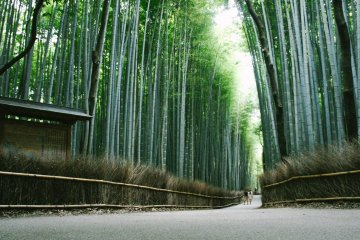
Arashiyama means Storm Mountain, one of main destinations in Kyoto after Higashiyama. Togetsukyo bridge, Tenryuji, and the bamboo forest are all landmarks of Arashiyama.

Kyoto's mysterious 'Bamboo Grove of Sagano' illuminated in the dark.
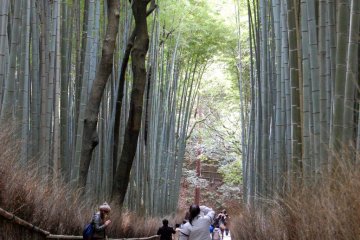
The Sagano Bamboo Forest sits next to Tenryu-ji temple in the attractive area of Arashiyama. It is a worthwhile departure from temple visits and beautiful year round.
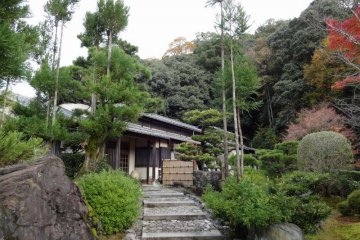
A hidden gem, Ryokan Yamazaki is worth the 30 minute bus ride from central Kyoto. Tranquil surroundings, hearty food and family treatment will start & end your day right.

Close to Nijo Castle in Japan's most historic city, this stylish, modern hotel is comfortable, well located and supremely affordable.

Finding a great place to stay in any city is always a challenge. But nestled on a quiet street a brief walk from Kyoto Station, perfectly-located luxury accommodations await travelers.
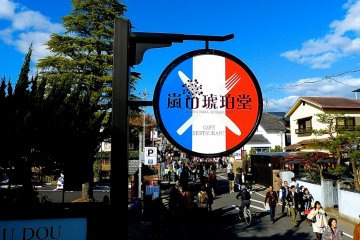
Kohaku-do is a casual French restaurant in Kyoto, Arashiyama. It is situated just a few minutes from Tenryu-ji Temple. And other train stations such as JR Saga-Arashiyama, Arashiyama Station on the Keifuku Dentetsu Line and Hankyu Line are all within a few minutes walk. The price range for the lunch sets is 2000-3000 yen, including hors d’oeuvre, soup, bread, a main dish, desert and a drink-bar. We ordered grilled whitefish and a hamburg steak. Both of the main dishes were quite good!

This new restaurant is easily accessible by foot from Arashiyama Bamboo Forest, Arashiyama Station, and Saga-Arashiyama Station, making it an ideal spot to try authentic Japanese gyukatsu. Elevate your already unforgettable trip with an equally memorable meal.
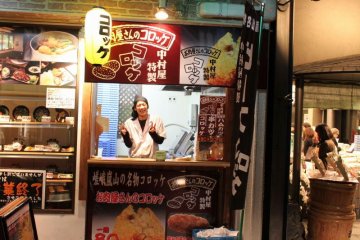
Foods Choices in Arashiyama. Serene eating encounters with eel or energy of the masses
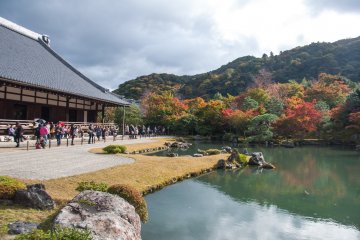
The Tenryuji is the main temple of the Rinzai Zen Buddhism sect of the same name and is located in the Arashiyama district in the northwest of the city of Kyoto. It is the most important Zen temple in the city and is a UNESCO World Heritage Site. The temple was built in 1339 by Shogun Ashikaga Takauji, who dedicated it to the recently deceased Emperor Go-Daigo. Both men were former allies until Takauji rebelled against the emperor in the struggle for supremacy in Japan. The temple should pacify the spirit of the deceased. The buildings of Tenryuji have been repeatedly destroyed by fire over the centuries, so that the current complex largely dates from the Meiji period (1868-1912). In contrast, the surrounding garden, which was designed by the well-known master of gardening, Muso Soseki, is still almost entirely original. Especially in autumn, when the foliage of the trees there and the Arashiyama mountains visible behind them turn red and yellow, the Tenryuji and its garden are a popular destination.

Ōkōchi Sansō is the former home and garden of the Japanese jidaigeki actor Denjirō Ōkōchi in Arashiyama, Kyoto. The villa is open to the public for an admission fee and is known for its gardens and views of the Kyoto area. Several of the buildings are recorded as cultural properties by the national government. [Wikipedia]
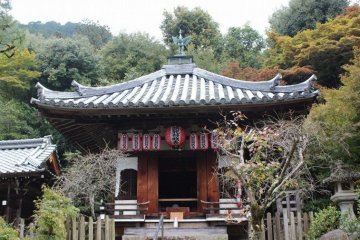
Nison-in is a Tendai Buddhist temple complex in Ukyō-ku, a western ward in the city of Kyoto, Japan. The temple's official name is Ogura-yama Nison-kyō-in Keidai-ji. The temple is a popular destination during the Japanese maple viewing season. [Wikipedia]